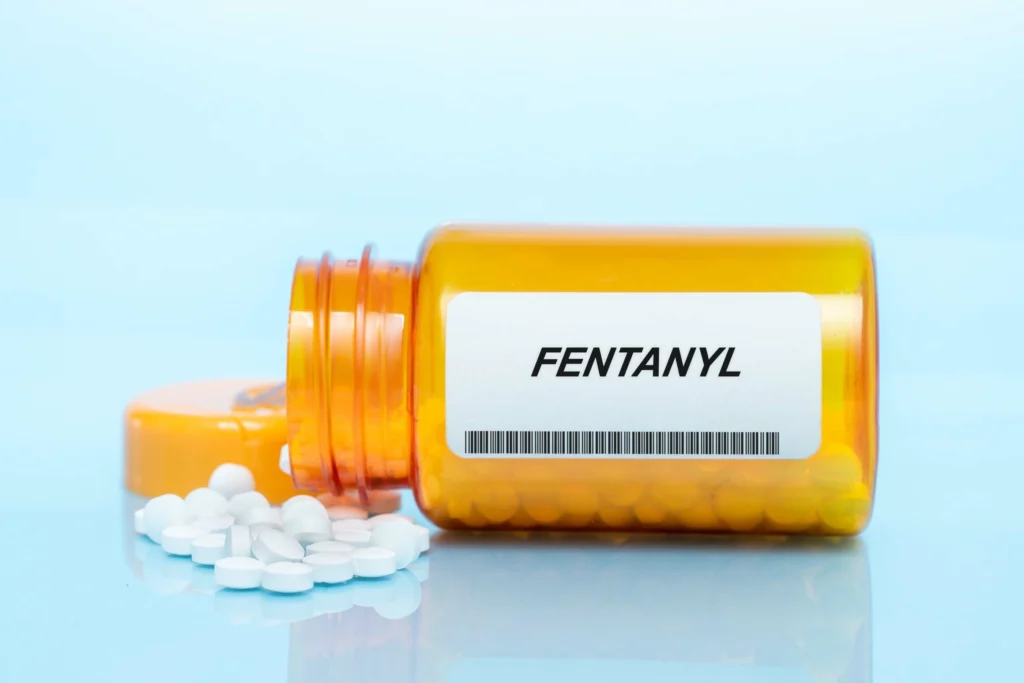Fentanyl Exposure and Overdose Symptoms
The opioid crisis in the United States is well-known. Fentanyl, a synthetic form of this class of drugs, is one of the deadliest. At around 50 times stronger than heroin, it accounts for a significant amount of both fatal and non-fatal overdoses. Whether intentional or unintentional, fentanyl exposure can result in serious effects.
What Are the Different Types of Fentanyl?
Fentanyl is available in two different forms, both of which are considered synthetic. The pharmaceutical variety is legal and prescribed by doctors to clients to soothe severe pain. Usually, this type of fentanyl is prescribed to individuals battling advanced stages of cancer or to treat pain associated with surgery.
The other type of fentanyl is made illegally and distributed through illegal markets. Typically, people who obtain it have a serious substance use disorder and wish to achieve the same effects that heroin provides. Alternatively, this form of fentanyl is included in other drugs to make them more potent. However, this also makes them more dangerous and increases the risk of an overdose. Illegal fentanyl is also cheaper and highly addictive.
Illegally made fentanyl is available in powder and liquid form. When powdered, it appears much like cocaine. It’s frequently mixed in with other drugs without the user realizing it, making it extremely dangerous to take. Meanwhile, the liquid form is often included in nasal sprays or eye drops. Some dealers even incorporate it as an ingredient in small candies.
Regardless of the form fentanyl takes, it can cause severe symptoms to those exposed to it. According to the Centers for Disease Control and Prevention (CDC), more than 150 people die daily from overdoses related to fentanyl and other synthetic opioids.
Why Fentanyl Is So Dangerous
It’s fair to wonder why fentanyl is so dangerous. The drug is very potent, so even a tiny amount can be deadly. Even as little as two milligrams can lead to an overdose and death.
What Are the Effects of Fentanyl?
Like heroin and other opioids, fentanyl binds to the opioid receptors in the brain that control pain and manage emotions. When a person begins to take the drug, they can develop a dependency as their brains become accustomed to it. This makes it difficult for a person to function normally to the point where they need more and more fentanyl to feel “good” or even normal. Substance use disorder can take over a person’s life. The following are common effects of fentanyl use:
- Breathing problems
- Confusion
- Constipation
- Dizziness
- Drowsiness
- Euphoric sense of happiness
- Headaches
- Loss of appetite
- Nausea
- Unconsciousness
- Vomiting
Side effects, especially those that are more serious, are more likely to occur during the first time a person uses fentanyl. Those who are older, have chronic lung conditions such as asthma or COPD, or who take a high dose of fentanyl have a greater risk of serious side effects. Their risk of life-threatening complications is also much higher.
What Are the Signs of Fentanyl Exposure?
For first responders helping individuals who overdosed and other people who don’t willingly take fentanyl but may face exposure to the drug, there are things to know. Fentanyl skin exposure is unlikely to cause any harm. However, it’s crucial to take precautions and thoroughly wash any areas exposed to fentanyl with water and soap. Avoid using alcohol-based hand sanitizers; these substances can cause fentanyl to absorb into the skin.
Fentanyl exposure through breathing in secondhand smoke is also unlikely to cause problems like an overdose. In addition, breathing in fentanyl powder in public, like on a train or a bus, is not likely to lead to serious side effects or an overdose. However, anyone who sees powder or crushed pills on any surface should avoid touching it unless they are a first responder with the appropriate protective equipment and gear.
To be on the safe side, anyone exposed to fentanyl who begins to have strange side effects should seek immediate medical attention.
Signs of Fentanyl Overdose
Although many people are prescribed fentanyl to control severe pain or to treat advanced cancer, the drug is addictive enough to lead to dependency. When a person abuses illegal fentanyl or accesses it unknowingly because it has been added to other drugs, it can cause them to overdose. The signs and symptoms of fentanyl overdose include the following:
- Choking or gurgling
- Cold, clammy skin
- Discoloration of the skin, such as a bluish tint in the lips and nails
- Limpness of the body
- Loss of consciousness
- Pinpoint pupils
- Slurred speech or inability to speak
- Unresponsiveness
If a person who overdoses on fentanyl doesn’t get immediate medical attention, they can suffer a coma or respiratory failure, which can be deadly.
Responding to a Fentanyl Overdose
If you or someone else experiences a fentanyl overdose, it’s essential to know what to do; it could save a life. Calling 911 is the first step. It allows medical personnel to arrive to administer emergency treatment.
Naloxone (Narcan), an opioid agonist, can temporarily reverse an opioid overdose. Approved by the Food and Drug Administration (FDA), it’s available as a nasal spray and in an injectable form. Medical professionals who prescribe opioids often ensure their clients also have naloxone in case of accidental overdose. Alternatively, people who have loved ones who are struggling with drug addiction to opioids can ask their healthcare providers to supply them with this life-saving treatment and teach them how to use it.
Administering naloxone during an overdose is crucial if the person has stopped breathing. If a person does not respond to one dose, a second one can be administered. Another dose may be necessary because fentanyl is such a potent drug. In addition, naloxone only stays in the body for 30 to 90 minutes, and fentanyl may remain in the body for longer than that. If a first responder has not arrived within this time frame, it is appropriate to dose the person experiencing an overdose a second time.
Even after naloxone is in a person’s system, they need to be monitored to ensure they continue breathing. Keeping them awake is essential to this. They should never be left alone. If the person is lying down, you should turn them onto their side in the event they vomit. This can prevent them from choking.
Although some people believe it’s wise to slap someone in the throes of an overdose or put them in the shower, these things should be avoided. It can worsen their symptoms and cause them to go into shock or suffer injuries. Inducing vomiting should also be avoided.
What Are the Risk Factors for Fentanyl Overdose?
Fentanyl overdoses occur when a person suffers toxicity to the opioid drug. Sometimes, taking fentanyl is intentional, while other times, a person may unknowingly take it when it’s mixed with other drugs. This is due to the sheer potency of fentanyl. Whatever the case, some people have certain risk factors that can increase their chances of having a fentanyl overdose or an overdose on other opioids. Those risk factors include the following:
- Changes in tolerance from taking a break from the drug
- Changes in potency due to drug supply
- Chronic health conditions like heart disease, hepatitis C, HIV or lung disease
- History of past drug overdose
- Mixing opioids with depressants
- Mixing opioids with stimulants
How to Reduce the Risk of Accidental Fentanyl Patch Exposure
Doctors may prescribe fentanyl patches to clients who suffer from severe pain, have advanced cancer, or after surgery. These medications pose risks to children or pets, so they should never be left out in the open where they can access them. Just like other drugs, fentanyl patches should be kept in a secure place such as a lockbox or someplace high where a child cannot get to them.
While wearing a fentanyl patch, it’s wise to cover it with an adhesive dressing to prevent it from coming off. Keeping it secured can avoid an accidental overdose by someone who was not prescribed the medication.
When taking off a patch and replacing it with a new one, the old patch should be disposed of properly. According to the FDA, fentanyl patches should be folded in half and stuck together by the adhesive sides and then flushed down the toilet. Never throw them in the garbage as children and pets can find them there.
A person with very young children must be careful at all times to prevent accidental fentanyl exposure. A parent wearing a fentanyl patch should avoid holding their child against them where the patch is; even partial detachment of the patch can result in fentanyl transferring to the child. They should also avoid sleeping with their baby to prevent potential exposure.
Recovery From Fentanyl Addiction
If you have decided it’s time to seek treatment so you can recover from fentanyl addiction, you’ve taken that first big step. Although recovery from any opioid addiction is challenging, there is hope. Detox is the first part of your treatment; it involves eliminating all traces of opioids from your system under the supervision of trained medical staff. During this process, you may receive medication to ease you through your withdrawal symptoms, which may be severe at times.
Inpatient treatment is often the best option for those with fentanyl addiction. It requires you to stay at the rehabilitation facility on a 24/7 basis so you can get continuous supervised care. Your treatment program is tailored to fit your needs and may include group, individual, or family therapy and various other services.
If you are ready to get the treatment you need for fentanyl addiction, Charles River Recovery can help. To start your recovery journey, call (844) 441-0455 today to learn more about our treatment programs.






